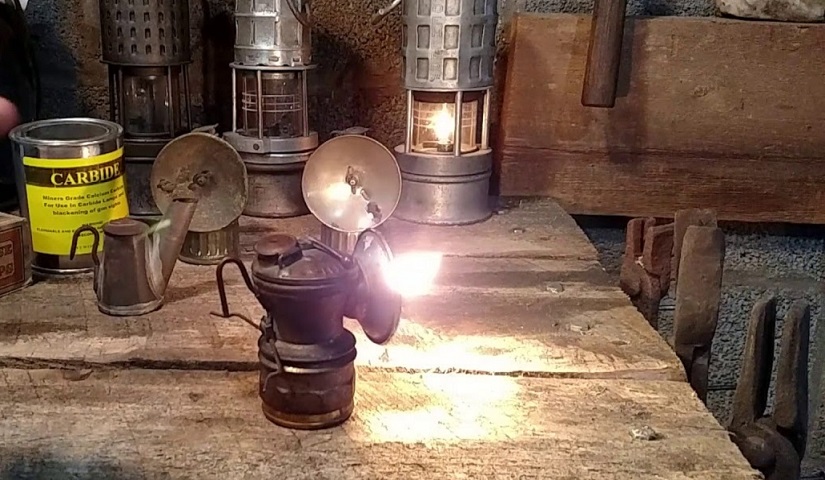
Carbide lamps, or acetylene gas lamps used to illuminate buildings, as lighthouse beacons, and as headlights on motor-cars and bicycles
A carbide lamp operates by the simple process of producing flammable acetylene gas through the combination of water and calcium carbide. The contraption has two compartments: a lower chamber that typically houses 1/4 cup (almost 2 ounces) of crushed carbide, and an upper chamber that holds about the same amount of water. The liquid is released—by turning a control lever positioned on top of the lamp—and allowed to drip slowly onto the crystalline substance below.
As soon as the carbide gets wet, a chemical reaction takes place releasing acetylene gas. The vaporous end-product travels through a felt filter and then escapes, via a tiny gas jet in the center of the reflector pan. Finally, a wheel flint—located on one side of the metal disk—is used to provide a spark to ignite the volatile gas.
The intensity of light produced by a carbide lamp can be adjusted simply by moving the valve to increase or decrease the amount of water that hits the carbide “rocks.” As you allow more water into the carbide chamber—and thus generate more acetylene—the illumination increases … but only up to a point. If the lever is placed in the full “ON” position, the excessive quantity of gas that results may actually blow the lamp out, or create so much pressure that some of the gas is forced out through the air vent in the water cap. (If the latter happens, a slight bubbling sound will warn you that the control is set too high and valuable gas is escaping.)
